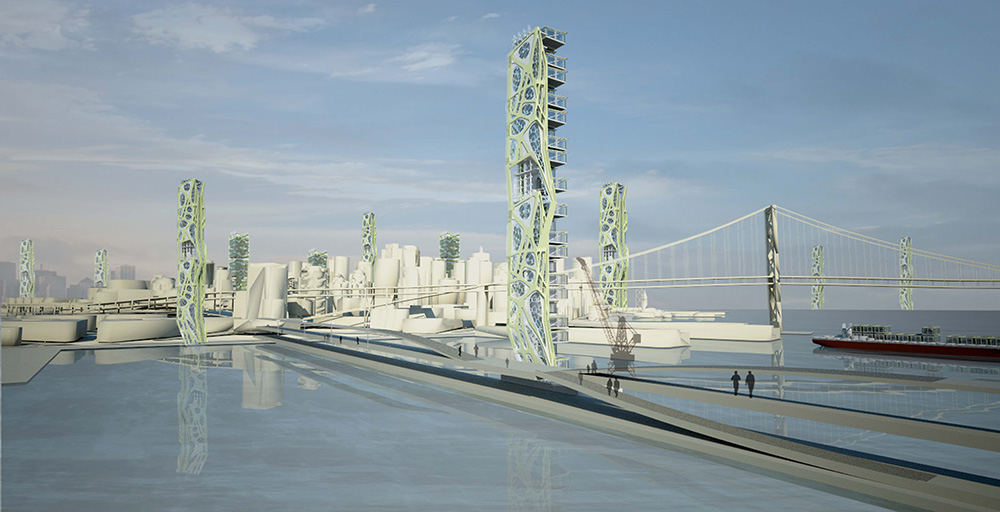If San Franciscans like to describe their city as “49 square miles surrounded by reality,” the visionary ideas that were too grandiose for even San Franciscans to consider remain some of the most fantastic designs for any city in the world. Imagine the Ferry Building surrounded by office towers, a grand casino on Alcatraz, the city wrapped in freeways and a subdivision covering flattened hills north of the Golden Gate Bridge.
These never built projects and others are part of “Unbuilt San Francisco,” a collaborative exhibition on view August through November, 2013 at AIA San Francisco, Center for Architecture + Design, Environmental Design Archives at UC Berkeley, California Historical Society, SPUR and the San Francisco Public Library.
Unbuilt San Francisco is a vivid alternative history lesson, showing visitors a shadow city and phantom skyline. The curators explore why a building does not take brick-and-mortar form, from economic hubris to community resistance, and how an unrealized structure can shape what follows.
A section on “First Takes” explores the early incarnations of buildings that do exist, and their passage from ideal to incarnation. “Rhetorical Unbuilt” looks at the other extreme of architecture — plans meant to put new ideas before the public, stir debate, and prod us to consider other ways of living in an age that faces environmental and societal pressures we could not have imagined a century ago.
One of the most fascinating designs in the show is a 1969 plan to fill the Sutro Bath ruins with condominiums — exactly the sort of proposal that spurred the “green” activism of the era and helped spawn the Golden Gate National Recreation Area.
This ambitious five-venue exhibition and its accompanying programs will provide San Franciscans and Bay Area residents with an opportunity to confront visions for the region that never came to pass. Images include early designs for San Francisco City Hall and other landmarks, neighborhood-scaled plans that were blocked by community activists, and provocative works by architects prodding society to take on challenges such as sea level rise.
Each of the five institutions will display treasures from archival collections, architecture firms and private architectural collections, and host companion programming, panel discussions and lectures.
More information: http://www.archandcity.org/unbuilt/


